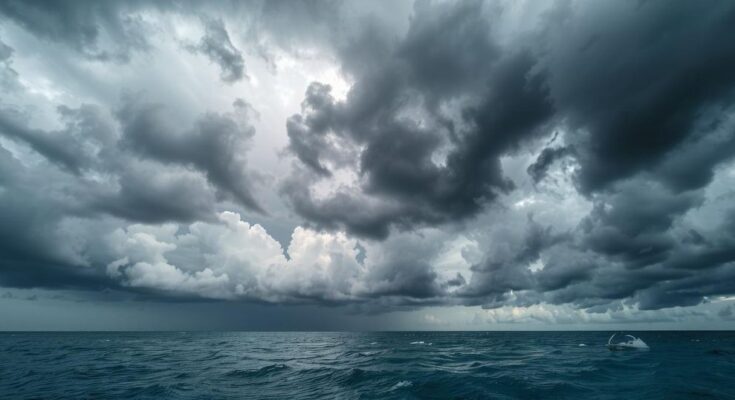Tropical Cyclone Jude struck Nampula province, Mozambique, on 10 March 2025, posing a risk to approximately 780,000 individuals due to high winds and heavy rains. Early humanitarian responses have been initiated, yet the context remains strained due to previous cyclones and other crises, including cholera outbreaks. Flooding alerts have been issued, and the infrastructure continues to face significant damage.
On 10 March 2025, Tropical Cyclone Jude made landfall in the Mossuril district of Nampula province, bringing maximum sustained winds of 140 km/h and gusts reaching 195 km/h. As reported by the National Institute for Disaster Risk Management, approximately 780,000 individuals are at risk due to the cyclone’s anticipated high winds and torrential rains, affecting the regions of Nampula and Zambezia. Additionally, flooding alerts have been issued by the Hydrological Department for key rivers in Nampula.
In advance of the cyclone’s impact, the Mozambique Anticipatory Action Framework was activated to mobilize an early response. Funds from the Central Emergency Response Fund were swiftly allocated to humanitarian partners for preparatory action three days prior to landfall. However, humanitarian capacities are currently overburdened, as two previous cyclones—Chido in December 2024 and Dikeledi in January 2025—have strained resources alongside ongoing challenges such as cholera outbreaks and food insecurity. The Tropical Cyclones Flash Appeal remains critically underfunded, currently at only 0.2 percent.
According to the Mozambique National Institute of Meteorology, Cyclone Jude is expected to persist in Nampula province throughout the day of 10 March, delivering heavy rainfall—potentially exceeding 250 mm in 24 hours—amid severe thunderstorms that threaten to exacerbate flooding risks in Nampula, Zambezia, Cabo Delgado, and Sofala. Localized flooding has already been reported in Nacala and Ilha de Moçambique.
Initial assessments indicate that Cyclone Jude has adversely impacted housing and essential infrastructure, including roads and communication systems. Teams from the National Institute of Disaster Management and IOM-DTM are prepared for rapid need assessments as they await access to affected areas. Reports have indicated that 780,468 people are at heightened risk due to the cyclone, with significant numbers in Nampula and Zambezia provinces.
Furthermore, Nampula and Zambezia are experiencing an increase in cholera cases, with reports of 36 and 8 cases respectively in the latest 24-hour period. Efforts to manage the cholera outbreak are hindered by damage to healthcare and sanitation facilities from earlier cyclones, alongside ongoing conflicts and misinformation. The risk of cholera spreading is heightened due to floods and population displacement during evacuations.
Tropical Cyclone Jude is the third cyclone to impact Mozambique in recent months, following Cyclones Chido and Dikeledi, which collectively affected approximately 684,000 individuals. Many residents in Nampula are still recovering from previous cyclonic events, with the humanitarian response only able to reach about 14 percent of those targeted for assistance in the affected districts.
In summary, Tropical Cyclone Jude has markedly impacted Mozambique, particularly in the provinces of Nampula and Zambezia, where significant population segments are at risk. Despite early mobilization of humanitarian resources, the ongoing demands from previous cyclones and other crises severely challenge response capabilities. The humanitarian context in Mozambique remains precarious, demanding both immediate action and long-term recovery strategies for affected communities.
Original Source: www.unocha.org




